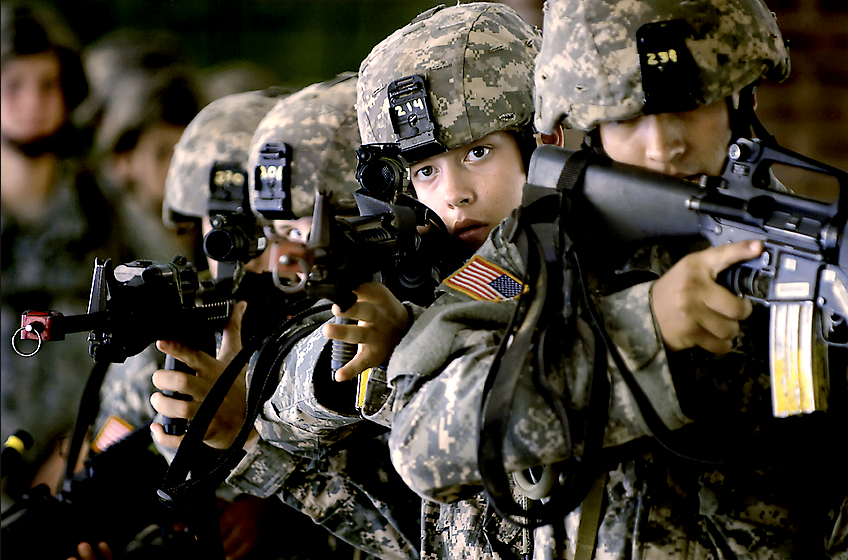The above photograph is of a group of “young supporters of the Islamic Jihad movement” marching at a rally in Gaza City. When I posted on it earlier this month I called attention to the expression on the young boys face, noting that his expression teetered between being vacant and deadly serious, but in either case “dissociated from our expectations of an otherwise idealized world of youthful innocence.” One commenter noted, “How many of his relatives are dead, how many in prison …? Why do you ignore the context? Why do you expect an ‘idealized world of youthful experience,’ where this experience clearly has no chance?” It is a good question as it calls attention to a complexity of the photograph that my original posting assumed but failed adequately to interrogate: the sense in which the image simultaneously activates and resists the trope of “youthful innocence.”
The original point I was trying to make was that “the idealized world of youthful innocence” is a taken for granted assumption for western audiences. That assumption is conventionally animated by the visual trope of children playing as if adults. Ordinarily, the key to the effectiveness of the trope is the additional assumption that the viewer recognizes that the child has a very basic understanding of the sense in which s/he is “playing” at being an adult and is thus operating in an idealized world—a world that is free of all that would undermine or mitigate youthful innocence. The telling marker in such images is the signification of carefree joy being acted out by the playful child. In the above photograph the children are clearly playing at being adults—note the toy guns, which activate the trope for western audiences—but their facial expressions lack any sense of carefree joy, and hence the image concurrently resists the trope. And the implication, at least for western audiences, is that these aren’t so much children as warriors, thus triggering yet a different common visual trope used to distinguish the Islamic, middle eastern world from the Christian, western world: “the warrior child.”
The tension connecting the tropes of “youthful innocence” and “the warrior child” is articulated in a somewhat different fashion in this photograph from Craig F. Walker’s Pulitzer Prize winning photo-essay, “Ian Fisher: American Soldier.”
The similarities between the two images are palpable, but it is their differences that are notable. The guns are no longer toys, as indicated by the safety plugs inserted in their barrels; and note too that the disposition of the weapons is more aggressive as they are being aimed rather than held at ease. These aren’t children playing at being soldiers, they are the real thing, however young. Attend, in this regard, to the different facial expressions depicted in each photograph. In the earlier image the lead child appears to be working hard to maintain his countenance, to appear like a serious adult, almost as if he knows he is being observed, but there is no question that he is a child; here, however, the expression on the face of the American soldier, while no less intense, nevertheless seems less affected. The eyes are cold and calculating; carefully and intently focused, they are machinelike, almost as if an extension of the weapon being aimed. It would not be hard to imagine him as a cyborg rather than a human, let alone a child. And yet the face of this teenage soldier is nevertheless childlike; both slender and smooth, it belies a physical immaturity that activates the trope of “youthful innocence” even as the photograph as a whole resists it.
In one photograph we end up with the warrior child, in the other we see a childlike warrior. The question is, what difference does the difference make?
Photo Credit: Ali Ali/EPA/WSJ; Craig F. Walker/Denver Post


Quite the diptych!
The children in one photo come from a people without a country who have to fight for every little thing they’re allowed to have- the children in the other photo come from a country that has gotten a significant amount of their riches through direct nilitary threat and confrontation.
One could argue the former example needs warriors to maintain the little they have and have any chance of ultimately securing “their fair share.” The latter needs them to secure their continued wealth and dominance.